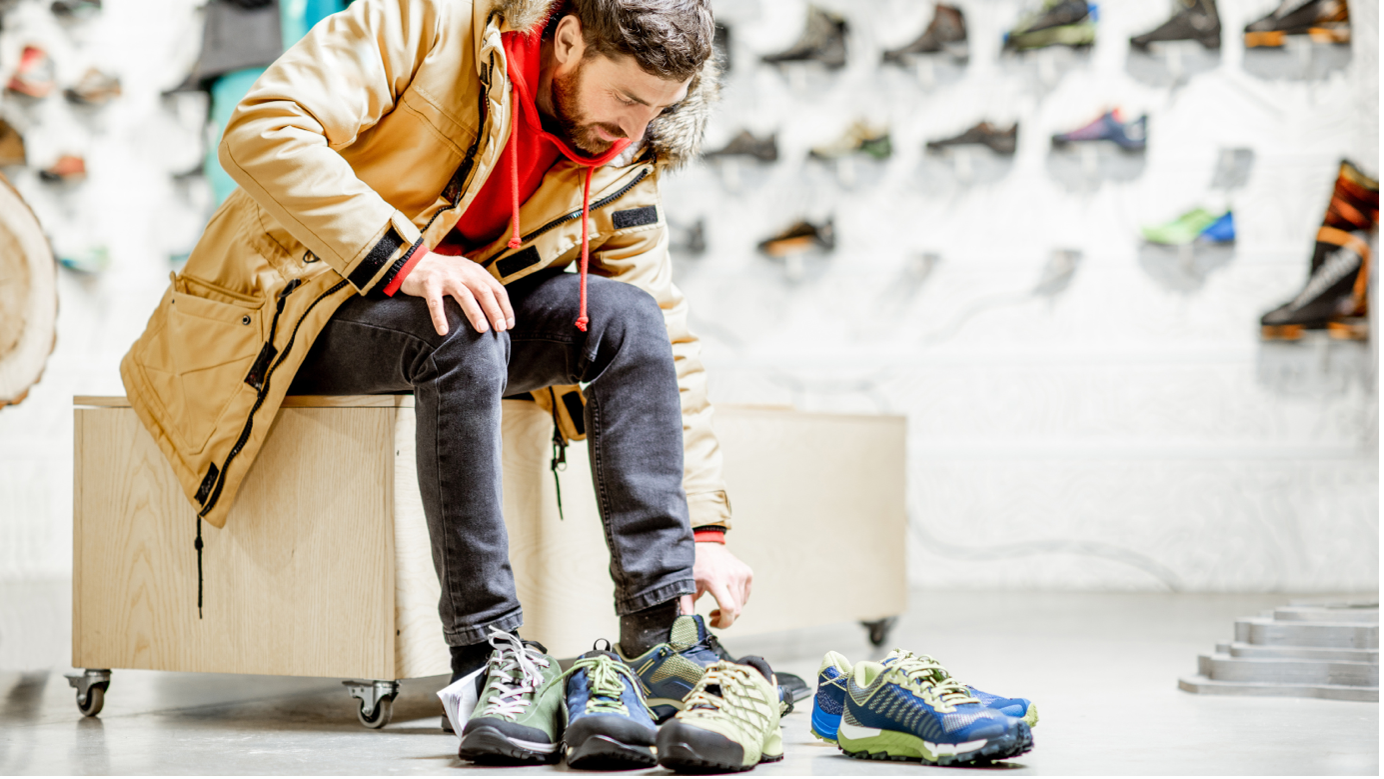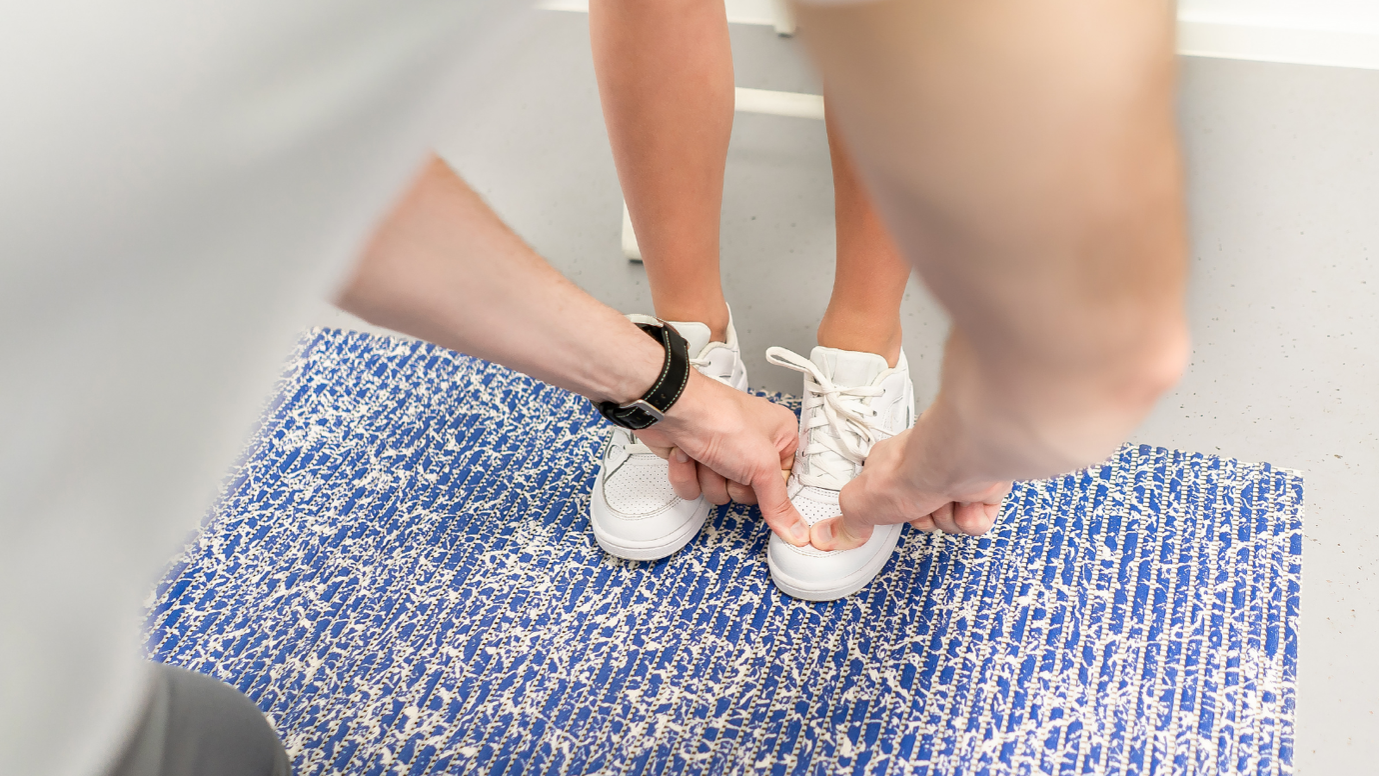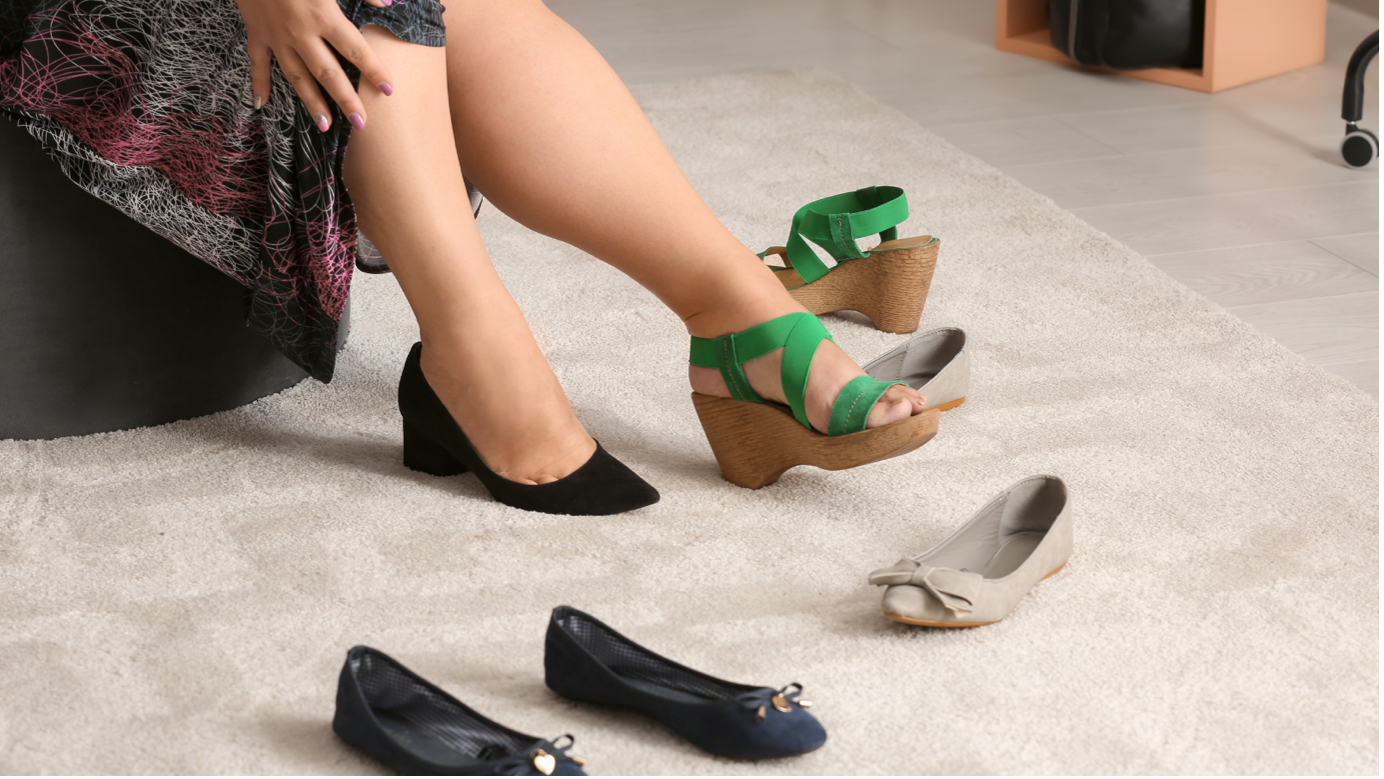Choosing the best shoes
Poorly fitting shoes are one of the leading causes of foot problems, from minor discomfort to chronic pain and deformities. Ensuring your shoes fit properly and provide the right support is essential for maintaining foot health, preventing injury, and improving overall comfort. Whether you're buying shoes for work, exercise, or casual wear, following these guidelines can help you choose the best footwear for your needs.

What to look for in a shoe
1. Heel
The heel is critical for balance and stability. Choose a shoe with:
- Broad base: Offers better support and reduces the risk of ankle sprains.
- Moderate height: Heels should be no greater than 4cm (1.5 inches) to avoid excessive pressure on the forefoot and strain on the Achilles tendon.
2. Heel counter
The heel counter is the stiff part at the back of the shoe that helps hold your heel in place.
- Reinforces the heel cup to provide stability.
- Prevents excessive movement of the foot within the shoe, reducing the risk of blisters and overuse injuries.
3. Sole
The sole is your foot’s first line of defence against impact. Look for:
- Cushioning: Absorbs shock during walking or running to reduce strain on joints.
- Grip: Provides traction to prevent slips and falls.
- Flexibility: Should bend at the ball of the foot but remain firm in the arch area for proper support.
4. Upper
The upper part of the shoe should:
- Be made from natural or breathable materials like leather or mesh to keep feet cool and prevent excess moisture.
- Fit snugly without tightness or pinching.
5. Linings
Inner linings contribute to overall comfort.
- Breathable and smooth linings prevent irritation and keep feet fresh.
- Look for seam-free linings to reduce the risk of blisters and rubbing.
6. Fastenings
Shoes with secure fastenings help keep your foot stable.
- Opt for laces, buckles, or touch fastenings (like Velcro) to hold your foot in place and reduce unnecessary movement inside the shoe.
7. Toe box
The toe box is crucial for comfort and preventing foot deformities.
- Ensure there’s enough depth to prevent rubbing on the tops of toes.
- Choose shoes with enough width to allow your toes to wiggle freely, avoiding conditions like bunions and hammertoes.
8. Insole
A good insole adds comfort and adaptability.
- Look for removable insoles that can accommodate orthotics or padding.
- Insoles should provide arch support and cushioning tailored to your needs.

The three essentials for proper shoe fit
1. Foot size
Your foot size can change over time due to factors like aging, pregnancy, or weight changes. A proper fit is critical for preventing foot pain.
- Always measure both feet, as one foot is often slightly larger than the other.
- Fit shoes to the larger foot for optimal comfort.
- Ensure there’s about a thumb’s width of space between your longest toe and the end of the shoe.
2. Arch type
Identifying your arch type—low, medium, or high—is crucial for choosing the right shoes.
- Flat Feet (low arches): Look for shoes with structured arch support to prevent overpronation and reduce strain.
- Neutral arches: Opt for shoes with moderate cushioning and arch support.
- High arches: Choose footwear with extra cushioning to absorb shock and prevent excessive pressure on the ball and heel of the foot.
- Consider a gait assessment with a us to determine your arch type accurately.
3. Pressure points
Pressure points can cause discomfort and lead to calluses or corns if ignored.
- Use orthotics or padded insoles to relieve pressure on specific areas.
Shoes with customisation options, like Aetrex footwear with Mozaic Customization, allow you to adjust pressure points for maximum comfort.
Specialised footwear options
At Essex Footcare we stock premium footwear brands like Aetrex, DB Widerfit, Fidelio, Sole UK, and Vionic. These brands offer:
- Multiple widths to accommodate different foot shapes.
- Advanced cushioning and arch support for various conditions.
- Stylish designs that prioritise both function and appearance.

Additional tips for choosing the right shoes
- Shop later in the day
Feet swell throughout the day, so it’s best to try on shoes in the afternoon or evening for a more accurate fit. - Wear the right socks
When trying on shoes, wear the same type of socks you’ll be using with them to ensure the fit is accurate. - Break shoes in gradually
Avoid wearing new shoes for extended periods immediately. Gradually increase the wear time to allow your feet to adjust. - Replace worn-out shoes
Worn soles, flattened cushioning, or damaged uppers can compromise support and comfort. Replace shoes when you notice significant wear. - Consider your activity level
Daily Wear: Look for comfortable, supportive shoes for all-day use. Sports or Running: Choose activity-specific shoes designed to reduce impact and improve performance.
Custom foot scanning and expert advice
To ensure the best fit and support, consider booking a digital foot scan at Essex Footcare. Our foot scanning technology helps identify your foot type, arch height, and pressure distribution, enabling us to recommend the most suitable shoes or orthotics for your needs.
The right shoes can make a significant difference in foot health, preventing discomfort and long-term problems. By understanding what to look for—heel structure, arch support, toe space, and more—you can protect your feet from unnecessary strain and injuries. For personalised advice, expert fittings, and high-quality footwear, book an appointment with us. Let us help you find the perfect pair of shoes to keep your feet happy and healthy!

